Wild Maryland: Return of the Ruby-throats
Weighing just about the same as a penny, the mighty ruby-throated hummingbird makes a 1,000+ mile journey each year. It travels from Central America back to the eastern United States in the spring to breed. The familiar hum of its flight and the flash of the green are always a welcome sight in my garden.
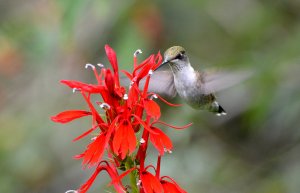
female visiting cardinal flower by Valerie Seger
During this time of year, we are fortunate to have ruby-throated hummingbirds return to Maryland. They are the only species of hummingbird known to breed in our area, though five other hummingbird species have been documented in Maryland.
Jeweled Migrants
Ruby-throated hummingbirds are iridescent green with white bellies. Their common name refers to the brilliant reddish-orange coloring on the throat of mature males during the breeding season. In contrast, females have a grayish throat with white underparts and green coloring on the upper body. Juveniles and non-breeding birds look similar to females. However, adult females have white outer corners on their tails while adult, non-breeding males do not.
Migration Marvels
Ruby-throated hummingbirds can fly 5oo miles over the Gulf of Mexico without stopping. Generally, their northward migration begins in late February, but we often do not see our first hummingbirds in Maryland until April. Unlike many other hummingbird populations in North America, ruby-throated hummingbird populations have steadily increased from 1966 to 2014. Ruby-throated hummingbirds can easily be attracted to backyards by providing food and shelter resources. It is also important to protect them from hazards like outdoor cats.
How to Help Hummingbirds
Provide Plants: Hummingbirds can flap their wings more than 50 times a second and burn a lot of energy in the process! One of the best ways to help local hummingbirds is to provide nectar via plants. In addition, hummingbirds eat insects AND spiders. Spiders are of particular importance as spider webbing is crucial for hummingbird nest construction. By planting native plants, you can provide both nectar and insects for hummingbirds to dine upon. Here are some native and non-native plant ideas:
- Columbine (Aquilegia canadensis); native perennial
- Bee balm (Monarda didyma); native perennial
- Trumpet honeysuckle (Lonicera sempervirens); native vine
- Trumpet creeper (Campsis radicans); native vine (caution can be aggressive)
- Spotted jewelweed (Impatiens capensis); native annual
- Wild bergamot (Monarda fistulosa); native perennial
- Cardinal flower (Lobelia canadensis); native perennial
- Scarlet sage (Salvia coccinea); non-native annual
- Pineapple sage (Salvia elegans); non-native annual
- Red buckeye (Aesculus pavia); non-native tree
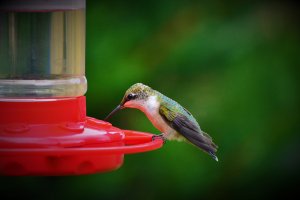
Hummingbird at a feeder by Chrystal James
Provide Nectar: Another food source is a nectar feeder. Mix ¼ cup of refined white sugar with a boiling cup of water until the sugar is dissolved. Let it cool and then add it to your feeder. Avoid raw sugars and honey as both can be harmful to hummingbirds. Skip the red dyes and, if wasps are an issue, choose feeders without yellow attachments. Be sure to clean your feeder, at least twice a week in the summer, with warm water and a mild vinegar solution. Feeders with mold and bacteria can be deadly to hummingbirds.
Provide Water: Add a bird bath to your yard or another water feature. Be sure to clean it regularly.
Provide Cover: Adding shrubs and trees to your yard will provide places for them to raise their young, as well as provide protection from potential predators. If you trim your trees in the spring, do a quick sweep of the area to make sure no hummingbird nests are accidentally disturbed.
Keep It Safe: Window strikes can be deadly for hummingbirds. If you have an issue with hummingbirds hitting windows, consider adding a window treatment and/or moving your feeder within three feet of your window. Keep cats indoors to prevent them from attacking hummingbirds and their young.
Reduce or Skip the Pesticides: Hummingbirds don’t derive all of their energy from nectar. They also need to consume protein and fat from insects and spiders. Hummingbirds have been found to accumulate pesticides in their bodies by consuming treated insects and plants. The impacts are not well known but could be problematic.
Report Nests: If you are fortunate enough to find nesting ruby-throated hummingbirds, please consider reporting them to the Maryland-DC Breeding Bird Atlas and/or Cornell’s NestWatch program. This information can help researchers track nesting trends in our region.

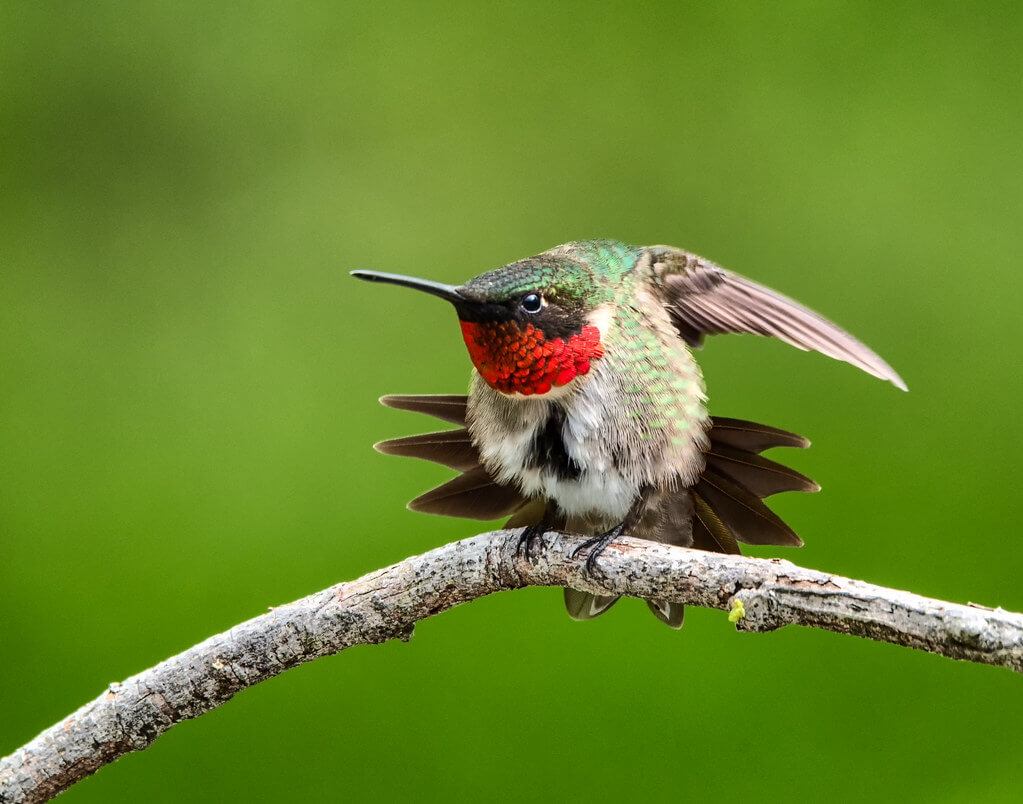
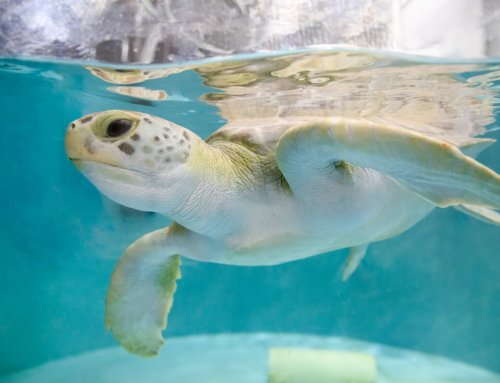
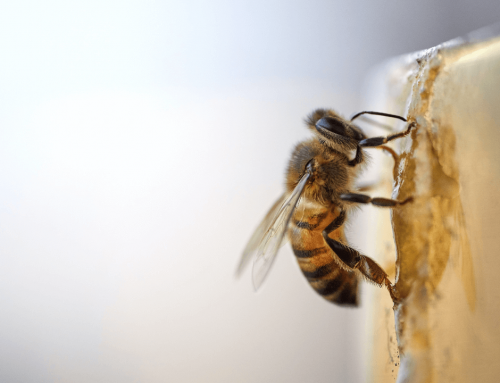
Leave A Comment